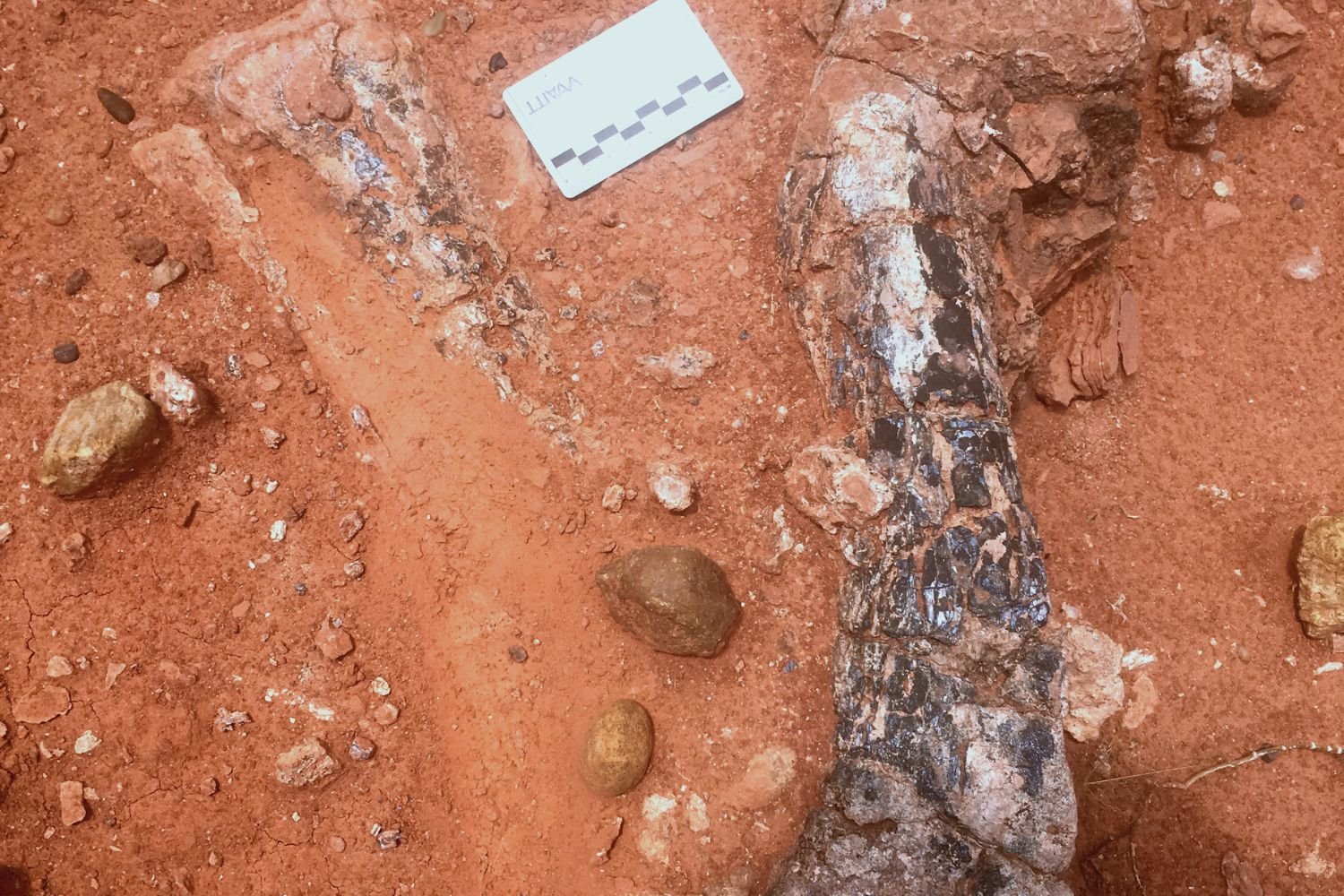An international team of scientists, including researchers from the University of Witwatersrand (Wits) in South Africa, the Natural History Museum of Zimbabwe, and Stony Brook University in New York, led by Prof Paul Barrett from the Natural History Museum in London, unveiled a new dinosaur species discovered in Zimbabwe. The herbivorous dinosaur, named Musankwa sanyatiensis, lived during the late Triassic Period, approximately 210 million years ago. The fossilized remains, comprising a hind leg found on the shores of Lake Kariba, shed light on Africa’s rich paleontological heritage.

Dr. Kimberley Chapelle, assistant professor at Stony Brook University and an honorary associate at the Evolutionary Studies Institute at Wits, highlighted the unique features of the discovered bones, which distinguish them from those of contemporary dinosaurs. Musankwa sanyatiensis belonged to the Sauropodomorpha group, characterized by bipedalism and long necks, and weighed around 390kg.
Despite the underrepresentation of African dinosaur fossils due to historical under-sampling, the limited discoveries remain scientifically significant, including some of the oldest dinosaurs known. This latest find underscores the potential of central Africa for further paleontological exploration.
Dr. Chapelle emphasized the importance of the discovery, stating that Musankwa sanyatiensis is the first of its kind found in Zimbabwe and signifies the region’s promising prospects for future paleontological research.








